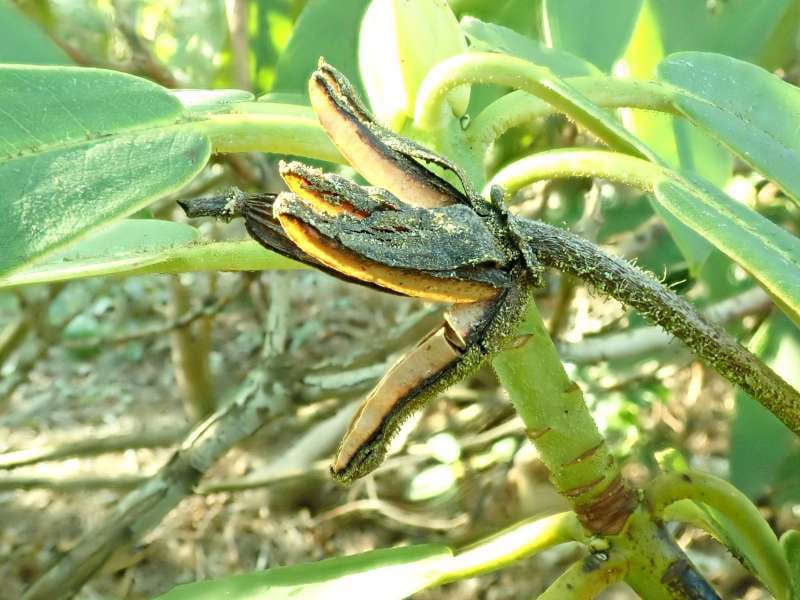Rhododendron glanduliferum
Billeder af Rhododendron glanduliferum
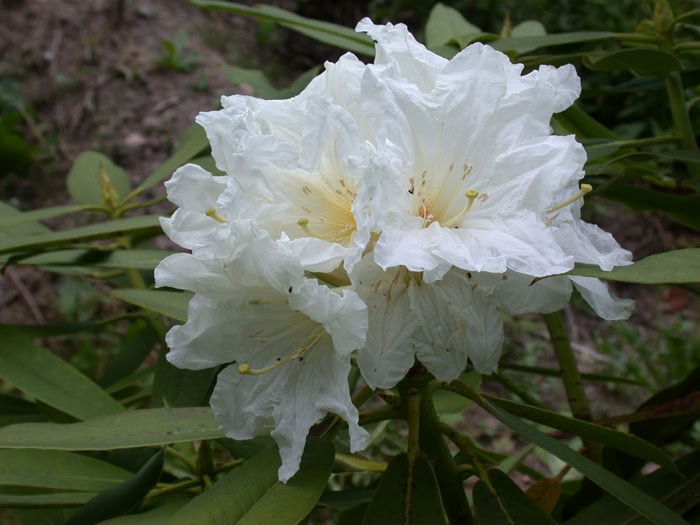

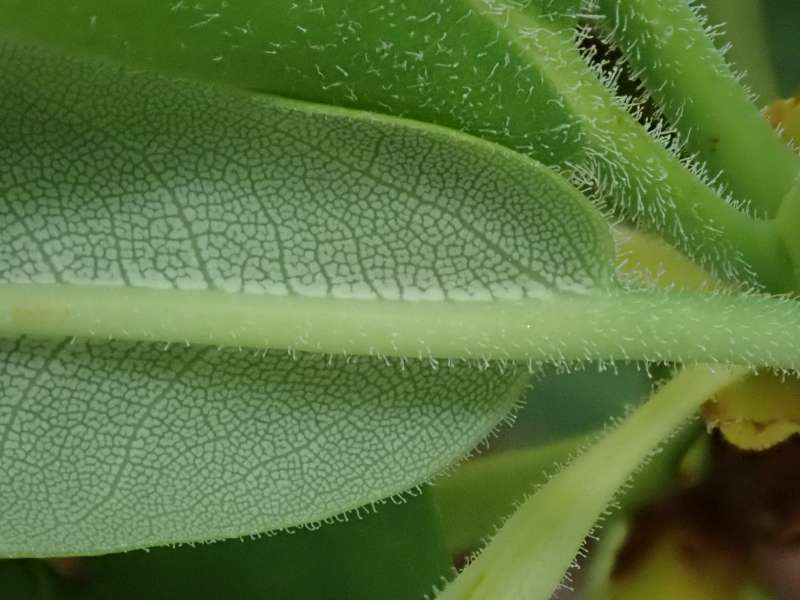




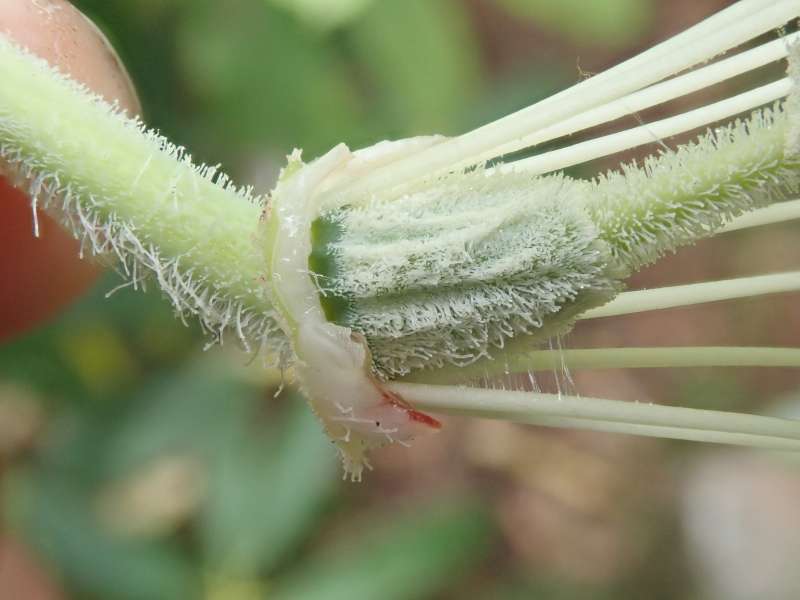

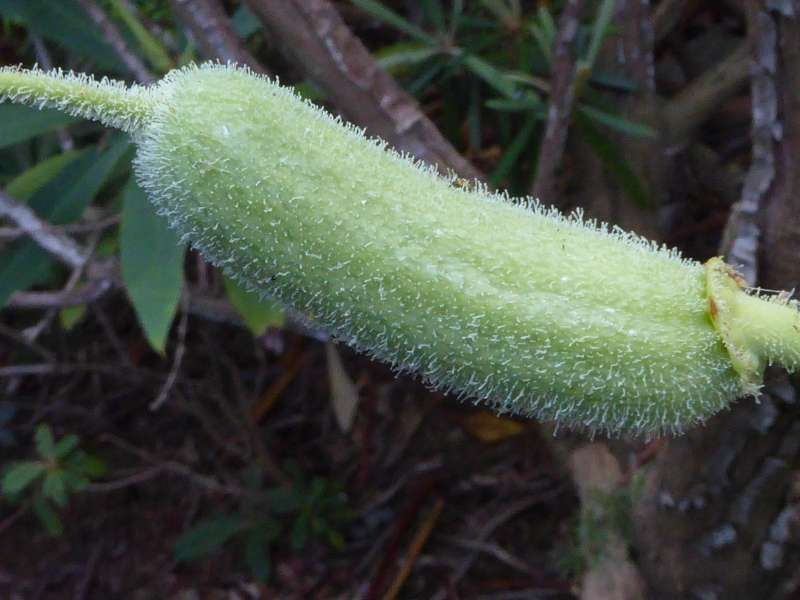

Beskrivelse
R. glanduliferum (Fortunea) (glandulifera complex). Et ny introduceret arter, som danner store afrundede buske. Bladene kan være meget store på aff. formen (30-36 cm i længen) R. leigongshanicum. Ellers Længde:bredde (4:1). Bladene er elliptisk til aflang-lancetformede og spidse. Nyvæksten er tæt kirtelbelagt. Bladundersider glatte, men hårede på R. leigongshanense. Kronen kirtelhåret udvendig. De duftende hvide blomster er tragt-klokkeformede med 6-7 lapper. Blomsterstilk kort 1,5-3 cm. Calyx 1mm. Blomsterne ligner dem hos R. auriculatum. Denne art er kendt fra kun tre steder i NØ Yunnan (og tilstødende N-Guizhou) hvor den vokser i kratområder fra 2300 til 3000 m. Kræver en del beskyttelse for senfrost. Alan Clark har insamlet frø R. glanduliferum aff. AC1041, AC1043 Zhaotang, Maushan, Lahhua 2000-3000m,(Blad Længde:Bredde=2), men det er arten R. qiaojiense.
Kan også ligne R. decorum med bladet her er mere ovalt. Længde:bredde (1.5-2.5 :1 ) og spids mere afrundet. Blomstrer i Okt-Nov fra Yunnan.
R. magniflorum ligner denne art, men frøene er forskellige?
Hans Eiberg
R. glanduliferum aff. collection # PW043, 1994 Blomsten har ikke kirtelhår på ydersiden.
R. glanduliferum aff. RSF 245/sd/1995, collection # PW041, 1994 Blomstrede i starten af juli 2011 og er fra Guizhou. Der er kirtelhår på bladoversiden på denne plante. Grøn nyvækst.
R. glanduliferum aff. RSF 240/sd/1995, collection # PW039, 1994 har rødlig nyvækst. Blomsten har kirtelhår på ydersiden og er større med flere blomster i klasen.
En anden type er RSF 503/sdl 1996 fra Steve Hootman collection (SEH174) som blomstrer tidligt i september.
● R. glanduliferum frø. Gennemlys. Foto: Hans Eiberg
● R. glanduliferum frø. Ovenlys. Foto: Hans Eiberg
Peter Wharton’s PW #’s
The SEH#174 glanduliferum (the Yunnan or „true‟ form ie. it is the form that was originally named as such) is quite a bit later than the forms from Guizhou which are generally under Peter Wharton’s PW #’s (it is not recorded by the Chinese as being native to Guizhou). Those are in full flower right now at the RSBG, both pink and white, while the Yunnan plants may not flower until early Sept. depending upon the year.
A very confusing group and I think that Chinese botanists may have recently named the Guizhou form as a new species, it is quite different in some ways and yet very similar, if you know what I mean. I have seen many populations in several parts of Guizhou and it is indeed a very confusing complex. Now we will have the Jens Nielsen collection of the closely related magniflorum, also from Guizhou, as well as my collection of faithiae from Guangxi last year to make it all even more confusing?
They are all great plants no matter how they are split out. You should not have to wait too long for flowers on either form, they should bloom at around 10 or 12 years of age.
Steven Hootmann
Steve Hootman talk: R. glanduliferum complex, magniflorum, auriculatum, faithiae, serotium, polytrichum.
What I call the “Guizhou form” of glanduliferum was introduced by Peter Wharton (from Guizhou) in 1994 under several PW#s, none of which were labeled glanuduliferum. These dozen or so different #s came in under the names “sutchuenense” davidii aff” “auriculatum” and “SS. Fortunea” among other wrong identifications. This is somewhat understandable as Peter was unfamiliar with most of these species and was relying on Chinese botanists who were adamant (and mostly still believe) that glanduliferum was known only from three sites in adjacent NE Yunnan which we now know to be ridiculous.
The “Guizhou form” of glanduliferum typically has somewhat smaller foliage and blooms up to two months earlier (usually early June for us) than the Yunnan type form which was introduced by Peter Cox and me the following year in 1995 from NE Yunnan. In almost every other respect, they are identical. I am pretty sure that Chinese botanists have now named the Guizhou plant as a new species but do not have any literature at hand.
Among the dozens of Fortunea seed collections made by Peter on that trip (under a wide assortment of names, some of which I listed above) appeared some plants that were close to auriculatum but almost always a bit “off” as well as many obvious hybrids and a uniform taxon that was quite different and unlike anything we had seen previously. This has been named the “Guizhou form” of fortunei ssp. discolor and these are a large percentage of the various plants many of us are growing under numerous wrong names (I am constantly told that our recent RSF first-time intro of the real davidii is incorrect – they have been growing davidii from PW for years! – these are mostly the discolor thing – davidii does not even occur in that part of China).
I am pretty sure that Chinese botanists have now also named the Guizhou discolor plant as a new species but do not have any literature at hand.
Other PW#
Many of the other PW#s are auriculatum or glanduliferum hybrids with this Guizhou discolor, making it all even more confusing. You have to take the names supplied with wild seed with a grain of salt from most sources – the AC collections that have been widely distributed for many years now are a prime example, creating a constant, unnecessary headache as we try to sort out all the mis-ids.
If you want the real auriculatum, Jens Nielsen re-collected it from the original Wilson site recently in Sichuan and we have introduced it from an isolated mountain in eastern Guizhou. These are offered occasionally by us and others who have acquired the seed.
There is also the enigmatic magniflorum which is like glanduliferum on steroids and seems to be one of the rarest species in the wild. We have also found glanduliferum in many different populations and now know that this species is much more common and widespread than we thought.
Many of the plants we sold back in the 90s as the PW seedlings became big enough to sell were given names like “glanduliferum aff.” since for one, we were not sure what they were although they were obviously not what Peter had called them and two – they were still just small seedlings which can be very hard to identify. Also, since all of these various glanduliferum collections have been flowering they have been hand-pollinated here in the garden and the seed has been distributed. I am afraid that I cannot say for certain that the two different forms of glanduliferum were not crossed with each other. Not sure if any of this helps, happy to answer any questions.
Steven Hootmann








